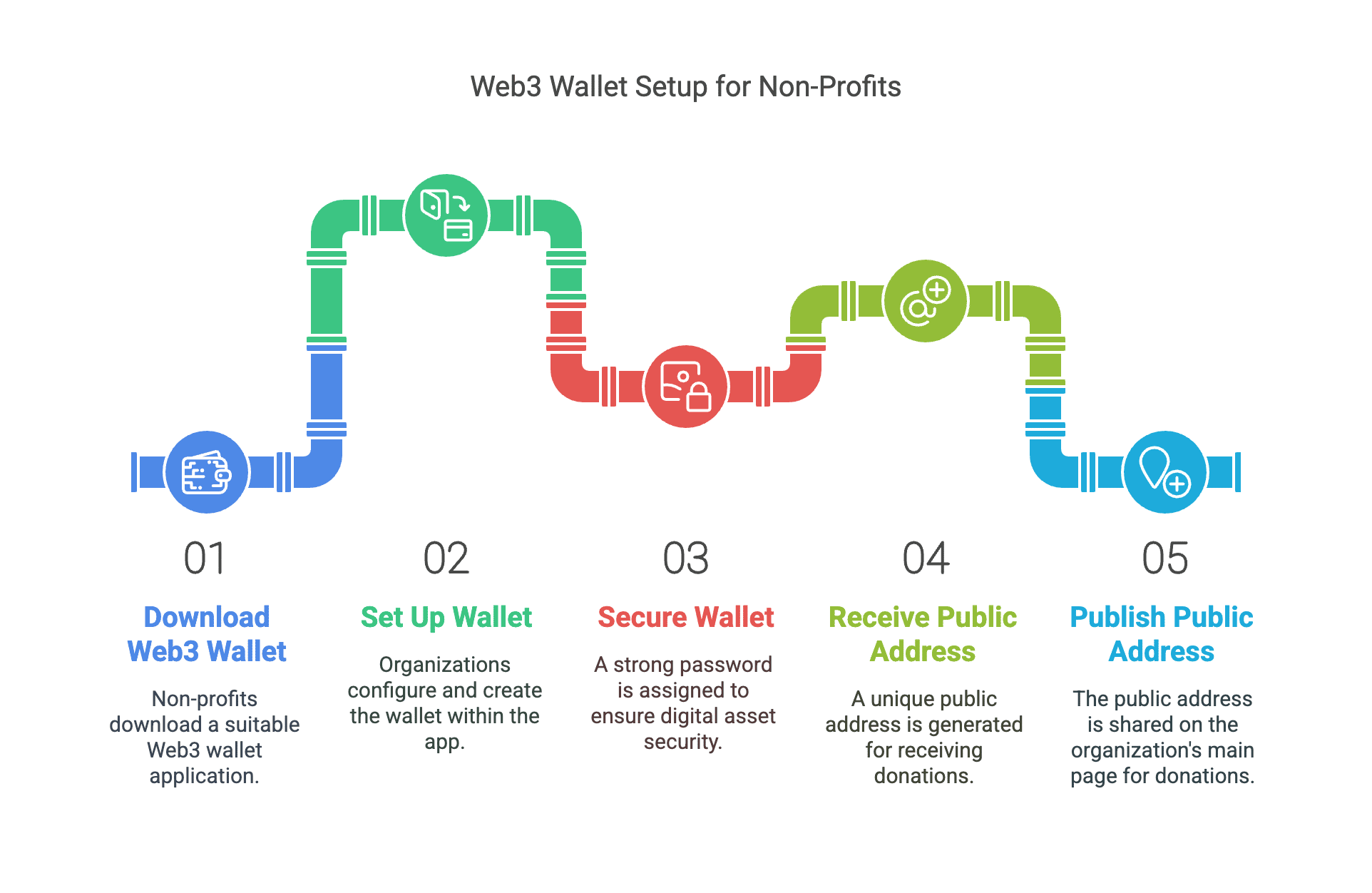The development of technologies has changed plenty of operations, including how non-profit organizations receive donations. And now, individuals who want to send money to the less fortunate ones or support charities can do that in a faster and more convenient way. Today, digital assets, like cryptocurrencies and NFTs, have risen in popularity, and individuals might not want to donate using fiat money but their virtual tokens.
This is why non-profit organizations should consider this and ensure they set up web3 wallets, as in this way, they can increase their donations and engage with a larger audience. The world is evolving at a rapid pace, and some say that cryptocurrencies are the future of money. So, organizations that want to thrive should allow crypto payments and set up web3 wallets. At the end of the day, the reality in which we pay for everything with cryptocurrencies and own more digital assets might not be that far from coming. So, to prepare better for that time, it might be a good idea to consider a web3 wallet right away and open your non-profit organization to NFT and crypto donations.
In this article, we will explore how web3 wallets could pave the way for a new generation of giving, so keep reading to find out more.
Why were web3 wallets created?
Web3 wallets didn’t exist from the beginning in the way you know them today, but they have evolved from digital wallets. First, there were web1 wallets, which represent a basic version, mainly used to buy things online. Then, web2 wallets stole the show, which came with some advances, and besides offering the possibility to purchase different products online, they also allowed individuals to better organize their digital items, including gift cards or loyalty points. However, they had a main disadvantage, as they were controlled by a central authority, making people want to use something decentralized.
Luckily, that desire became a reality when blockchain technology was introduced to the world, which also led to the creation of the web3 wallet. Web3 wallets offer the possibility for owners to be in total control of their assets, and thanks to them, they can make transactions and send virtual coins directly to other users without needing intermediaries in these processes.
With the help of web3 wallets, people can keep their digital assets, including cryptocurrencies, safe. Cryptocurrencies are virtual coins that have brought many advantages to the world as they simplify multiple processes and come with lower fees and faster speed. Bitcoin was the first digital coin ever created that finally offered a solution to fiat money. Even though Bitcoin represented the only crypto option for a long period, that stopped when cryptocurrencies increased in popularity. That made developers want to create other digital coins that could finally overcome the shortcomings of the crypto pioneer.
They managed to do that, especially Ethereum, which brought a lot of advantages to the world, so it managed to become the second-largest cryptocurrency by market cap. Ethereum is an important blockchain that encourages the creation of smart contracts, DeFi, dApps, and NFTs. For example, NFTs are unique digital assets that have become very popular in recent years. They are very versatile and they can be collectibles, art pieces, virtual real estate, digital trading cards, and more. These digital assets can be found on an NFT marketplace, like Magic Eden, which is the go-to place when individuals want to invest in non-fungible tokens.
All the advantages blockchain technology has brought to the world have also allowed non-profit organizations to benefit from more donations. So, now they can set up a web3 wallet to receive donations in a way they haven’t imagined.
How can non-profit organizations use a web3 wallet to benefit from more donations?
Download and install the wallet
Non-profit organizations should download and install a Web3 wallet to receive donations in the form of cryptocurrencies and NFTs. These wallets vary; some can function as a mobile app, while others can work as a browser extension or desktop application.
Set up the wallet
Once non-profit organizations have downloaded the selected wallet, they need to set it up. This is also the step in which users are effectively creating the wallet in the app. This step might take some time, and after this, it is time to secure the wallet and assign it a strong password so that users can keep their digital assets secure.
Receive a public address
After the steps mentioned above, users will receive a public address, a unique identifier that allows them to receive certain digital assets. Non-profit organizations can publish this public address on their main page so that people can see it there and donate with cryptocurrencies if they desire to do that. This unique identifier is similar to an email address and functions easily.
Why should non-profit organizations consider web3 wallets?
Web3 wallets can forever improve how people handle transactions daily, as they bring unparalleled security and convenience to the game. This is why organizations from plenty of fields worldwide have considered a web3 wallet and added it to their operations to keep up with the constant changes that appear in the financial sector. Web3 wallets can also improve a lot of parts of the nonprofit world and help them attract more people to donate and make a change for the better. Web3 wallets can bring a lot of advantages to non-profit organizations, as they can streamline the donation processes, boost donor trust, and offer the chance for people to make an essential contribution to various causes.
Even if people worldwide could want to make a donation, they might hesitate to do so if this comes with a challenging operation. Instead, a web3 wallet simplifies many of these processes, allowing people to truly enjoy the happiness of helping someone.









































